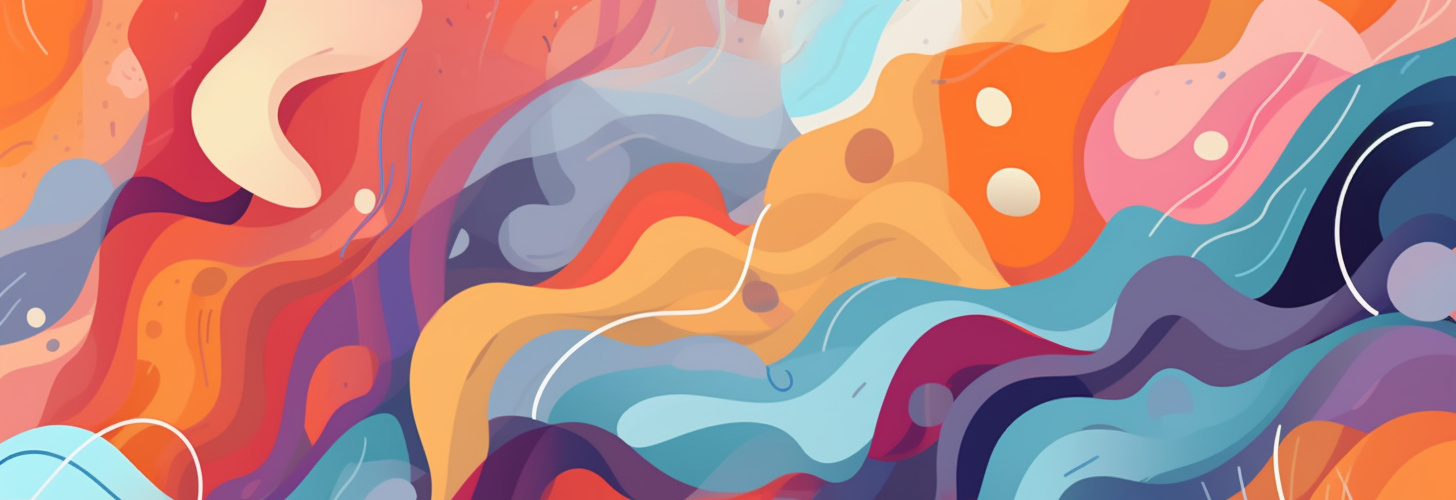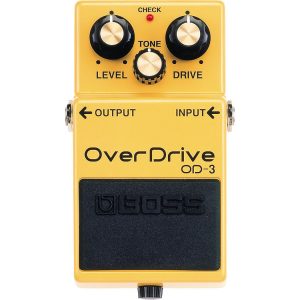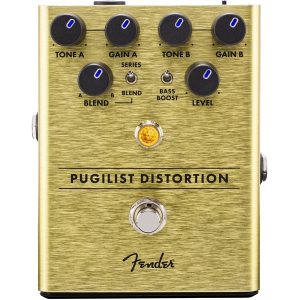
Wah – Wahs, Flangers, Phasers & Delays!! The world of effects are confusing to say the least, full of complicated and sometimes humorous names to describe sounds that you can easily imagine but sometimes find difficult to describe or articulate. Which is why I’ve written a series of articles on effects pedals and their use/context. This week it’s all about the gain as we take a look at distortion pedals.
Overdrive:
The Boss OD-3 Is A Staple Overdrive Pedal
Technically Overdrive is a type of distortion but it can vary so much in tone and application that I’ve chosen to separate the two. An overdrive pedal simulates what happens when you ‘overload/drive’ the tubes in an amplifier past the point where a pristine sound is possible. It can alter the sound of your channel to anything from a subtle punch of gain and volume to something quite meaty and powerful added to your signal chain. The advantage of using an overdrive pedal over just a tube amplifier is that you don’t have to play at an unreasonable volume level to get that natural overdriven sound that you want and you can splice your favourite overdrive pedal with the amps natural overdrive to create a sound completely your own.
Overdrive (as with a lot of gain based effects) takes time to dial in the best settings for the job and rewards experimentation and combinations that you might not of thought of. One of the most collectable guitar pedals of all time is in fact an overdrive: the fabled Klon Centaur, a pedal that can go for upwards of £1000+ so the demand for divine sounding overdrive in pedal form is always prevalent.
Famous examples of overdrive include: “The Rumble” – Link Wray, “You Really Got Me” – The Kinks, “Whole Lotta’ Love” – Led Zeppelin & many, many others.
To see our stock of overdrive pedals click here.
Distortion:
The Fender Pugilist Is a Brand New Distortion Pedal
Distortion is a more extreme version of overdrive, over-saturating the signal with more and more overdrive until the original sound is considerably more gain infused, sometimes to the point where the original clean sound cannot be heard at all in the sonic mix. Distortion also grants an almost violin like sustain due to the natural overtones and raw power of the effect and by default is one of the most the common effects available on the market today (often included with every amplifier as standard).
The reason we use distortion pedals however is to provide even more variety to your amps sound, as you may want a distortion tone different to the one naturally found within your amp, or to help you sound like your favourite players. Like overdrive Distortions can be mixed together to create unique and sort after tones or to add even more saturation to your overall sound.
Famous examples of distortion include: “Smells Like Teen Spirit” – Nirvana, “ Iron Man” – Black Sabbath and “Panama” – Van Halen (as well as countless others).
To see our stock of distortion pedals click here.
Fuzz:
Fuzz is an extreme type of distortion that has often been described as woolly, raspy and thick and was extremely popular in the 60s, 70s and 90s. The Fuzz effect also sounds far more compressed and squashed in frequency range compared to distortion and as such has a very definite tonal niche on the gain spectrum. Able to evoke association with the decades in which it was popular fuzz has the uncanny ability to make a guitar line sound very nostalgic and powerful, although it’s not as usable in as many contexts as overdrive or distortion (unless you are a fuzz fiend of course). Still it’s very much worth experimenting with if you’ve never gone out of your way to experience the fuzz effect firsthand, who knows you may morph into one of those hardcore Fuzz enthusiasts (we know you’re out there).
Famous examples of Fuzz include: “Cherub Rock” – The Smashing Pumpkins, “Satisfaction” – The Rolling Stones and “Purple Haze” – Jimi Hendrix.


